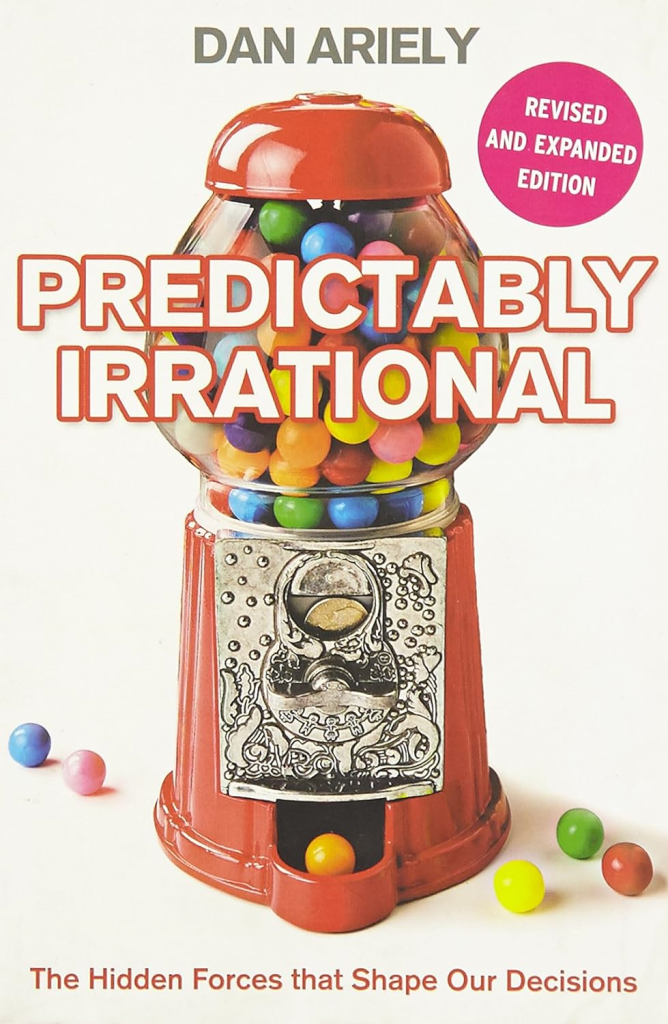Book Review 2025.09: Predictably Irrational (2009), Paperback 244 pages, May 27, 2025

I like behavioural economics for it negates the concept of “no free lunch” espoused by the traditional economics. Not only it negates, it also identifies multiple points where “free lunches” are served. Aptly titled “Predictably Irrational -The Hidden Forces that Shape Our Decisions”, this book identifies situations where we behave irrationally, but predictably enough to create free lunches opportunities.
The author identifies twelve situations where this predictably irrational behaviour arises, each organized in a separate chapter. The organisation of these chapters follows a similar structure of outlining of the “free lunch idea” by sharing an example of its practice, explanation of the situations where it works and where it may not work, description of experiments to validate these ideas and finally elaborating further areas where this idea could find application.
The initial five chapters covering the role comparison plays in decision making, the impact of anchor price in buying decisions, the lure of zero cost or “free” offers, how social norms and market norms conflict and the influence of arousal in decision making are easy to appreciate and can be validated using our own daily experiences. However, the subsequent chapters, especially the last two pertaining to character traits like the reason for dishonest behavior and the impact of cash in dampening the instinct for dishonesty behavior were not similarly relatable to me, may be due to my cultural background which is distinct from the American culture and backdrop used to illustrate it.
While not specially limited to this book, but overall, across many similar books on psychology and behavioral economics I find it tough to accept validation of certain behaviors that is not in sync with my own understanding but is considered proven using empirical experiments of a few hundred or a few thousand students from mainly US universities. I feel both the sample size and the homogeneity of the experimental group seen in the age group, economic background and the cultural setting is too limited for generalizing these observations across human nature.
Overall, I found this book very useful in providing many obvious instances where we humans are predictably irrational and invalidate the traditional economic theory of rational decision making. I recommend this book to all readers who would like to get an exposure to behavior economics, as the first few chapters are not only illuminating but also insightful and memorable.
Happy reading as we seek to understand human judgment and decision making.
